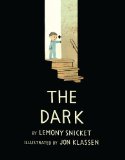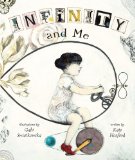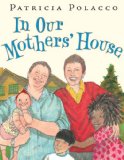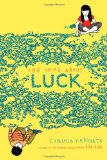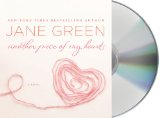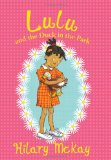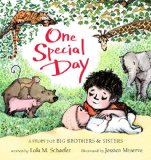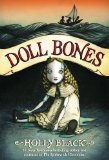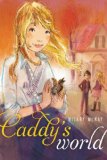Review of The Dark, by Lemony Snicket and Jon Klassen
by Lemony Snicket
illustrated by Jon Klassen
Little, Brown and Company, New York, 2013. 40 pages.
Starred Review
This book is hard to describe. We have a boy, fascinated but afraid of the dark.
The dark lived in the same house as Laszlo,
A big place with a creaky roof,
smooth, cold windows,
and several sets of stairs.
The Dark sometimes hides in the closet or behind the shower curtain, but mostly it lives in the basement. Of course, at night it goes out and spreads itself against the windows and doors of Laszlo’s house.
One night, the dark comes and visits Laszlo in his room. It calls his name. It asks him to come so the Dark can show him something… something downstairs in the basement. Though Laszlo had never dared to come to the dark’s room at night before.
And there’s still room for Lemony Snicket’s philosophizing! I love the page just before he finds what the dark is going to show him.
You might be afraid of the dark, but the dark is not afraid of you. That’s why the dark is always close by.
The dark peeks around the corner and waits behind the door, and you can see the dark up in the sky almost every night, gazing down at you as you gaze up at the stars.
Without a creaky roof, the rain would fall on your bed, and without a smooth, cold window, you could never see outside, and without a set of stairs, you could never go into the basement, where the dark spends its time.
Without a closet, you would have nowhere to put your shoes, and without a shower curtain, you would splash water all over the bathroom, and without the dark, everything would be light, and you would never know if you needed a lightbulb.
Oh and Jon Klassen’s illustrations? Perfect! Most of the scenes are shadowy, with the dark hiding in corners. But at night, we’ve got pitch black backgrounds, lit only by Laszlo’s flashlight.
And there’s a happy ending, with Laszlo no longer afraid of the dark.
This is the perfect slightly scary story for children too young for scary stories. I don’t *think* it will make a child afraid. I think instead it will give them a wonderful vehicle for talking about things they might be afraid of.
And this Dark is decidedly friendly.
LemonySnicketLibrary.com
burstofbeaden.com
lb-kids.com
Find this review on Sonderbooks at: www.sonderbooks.com/Picture_Books/dark.html
Disclosure: I am an Amazon Affiliate, and will earn a small percentage if you order a book on Amazon after clicking through from my site.
Source: This review is based on a library book from Fairfax County Public Library.
Disclaimer: I am a professional librarian, but I maintain my website and blogs on my own time. The views expressed are solely my own, and in no way represent the official views of my employer or of any committee or group of which I am part.
